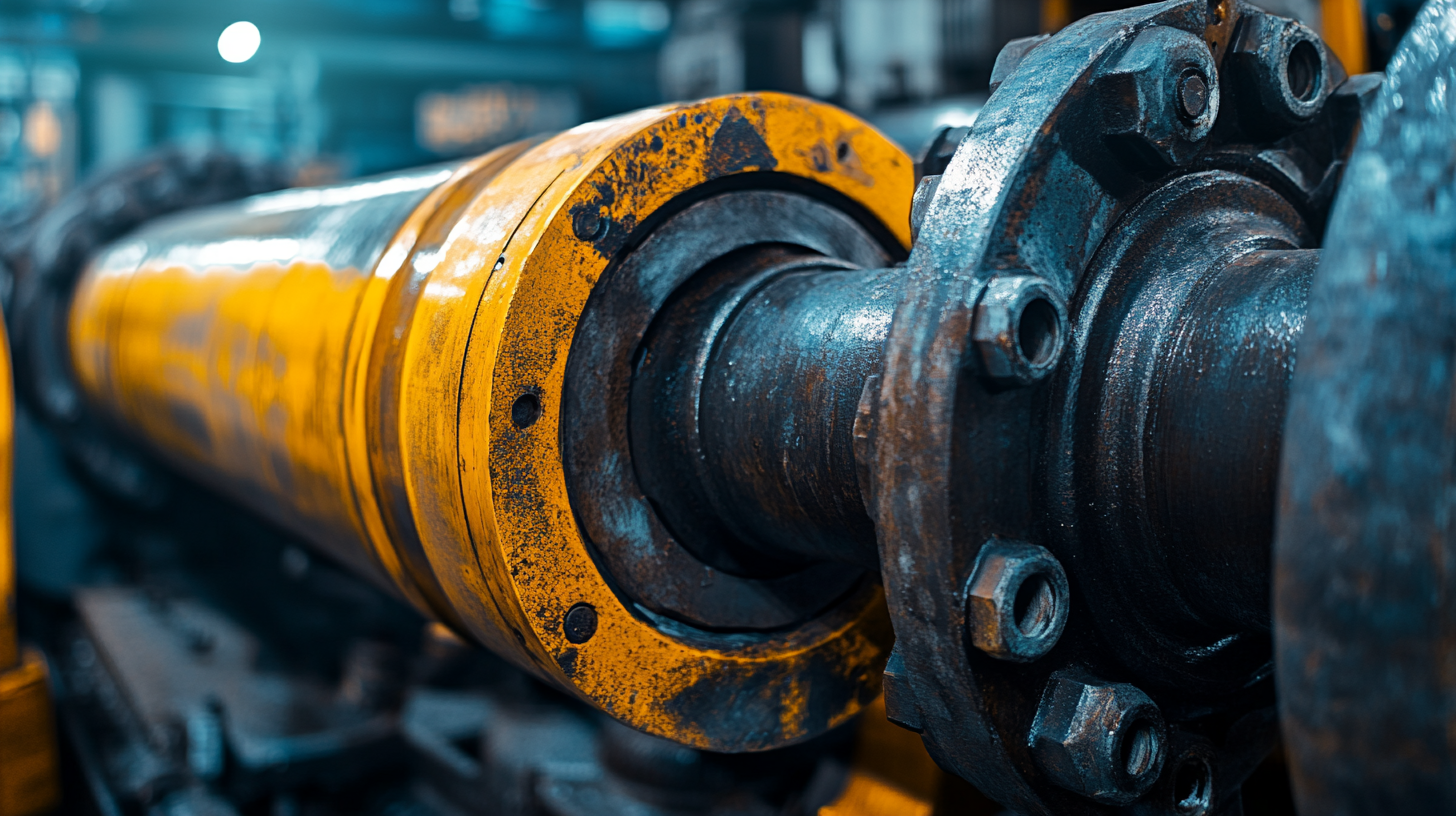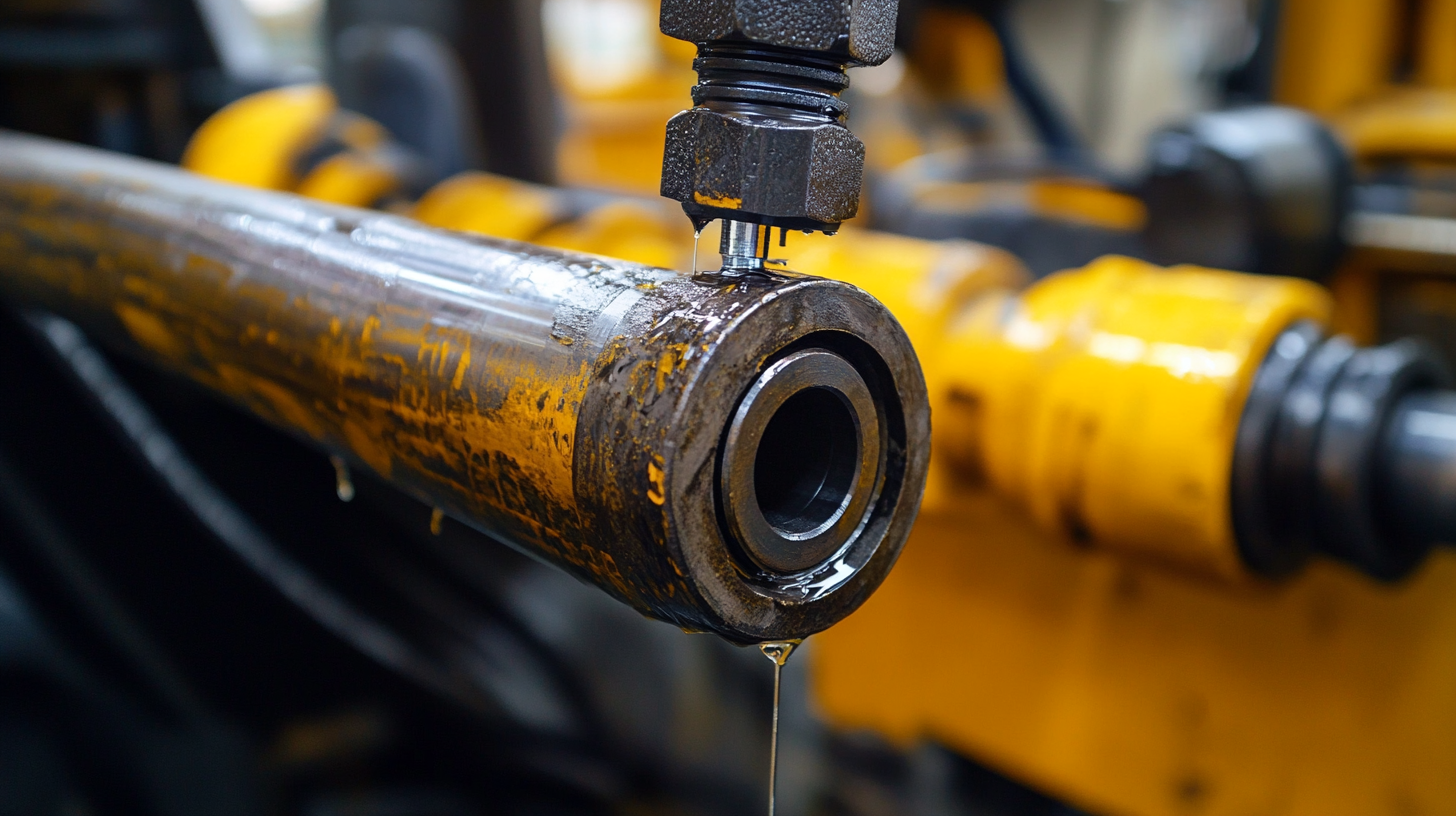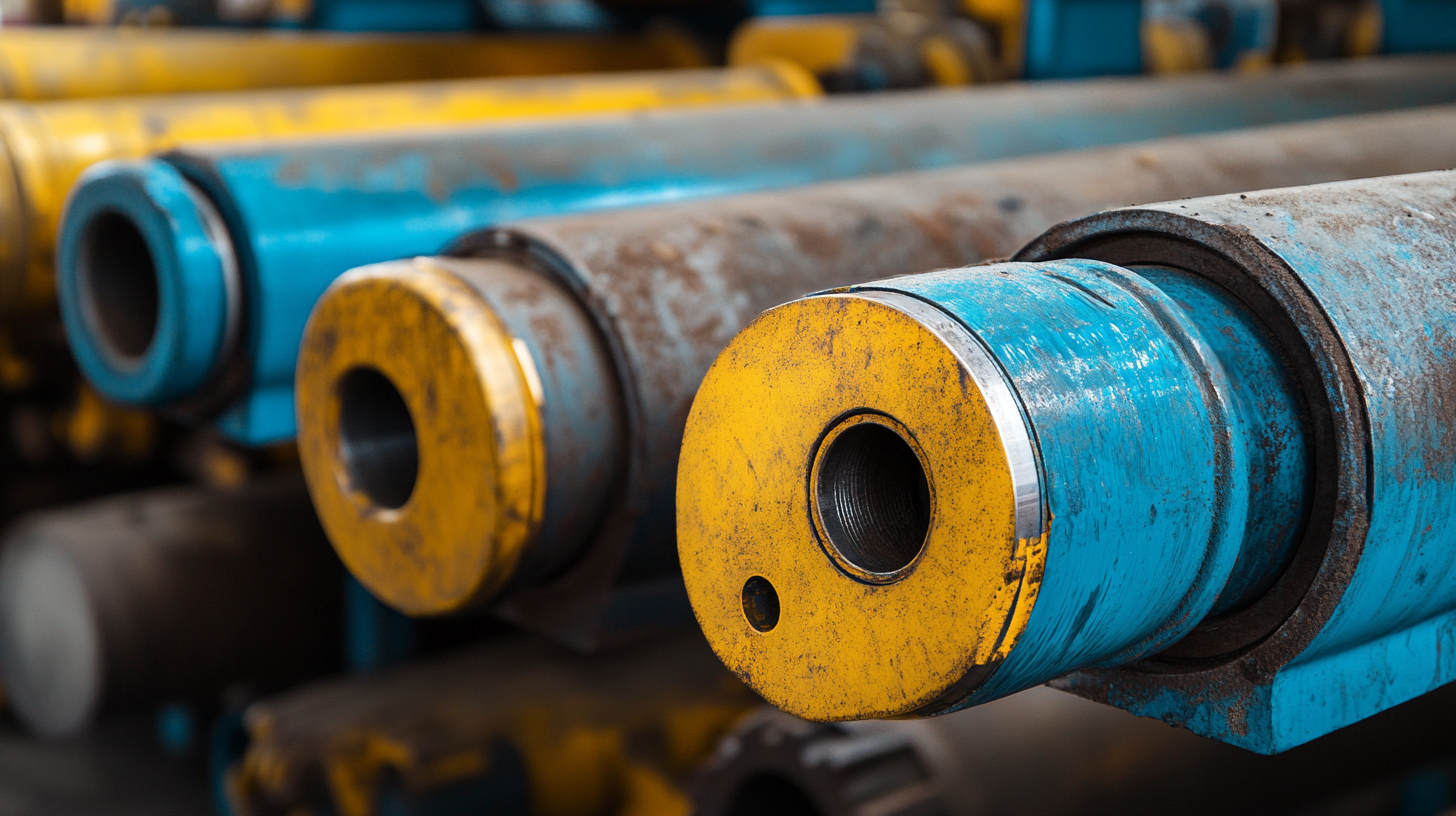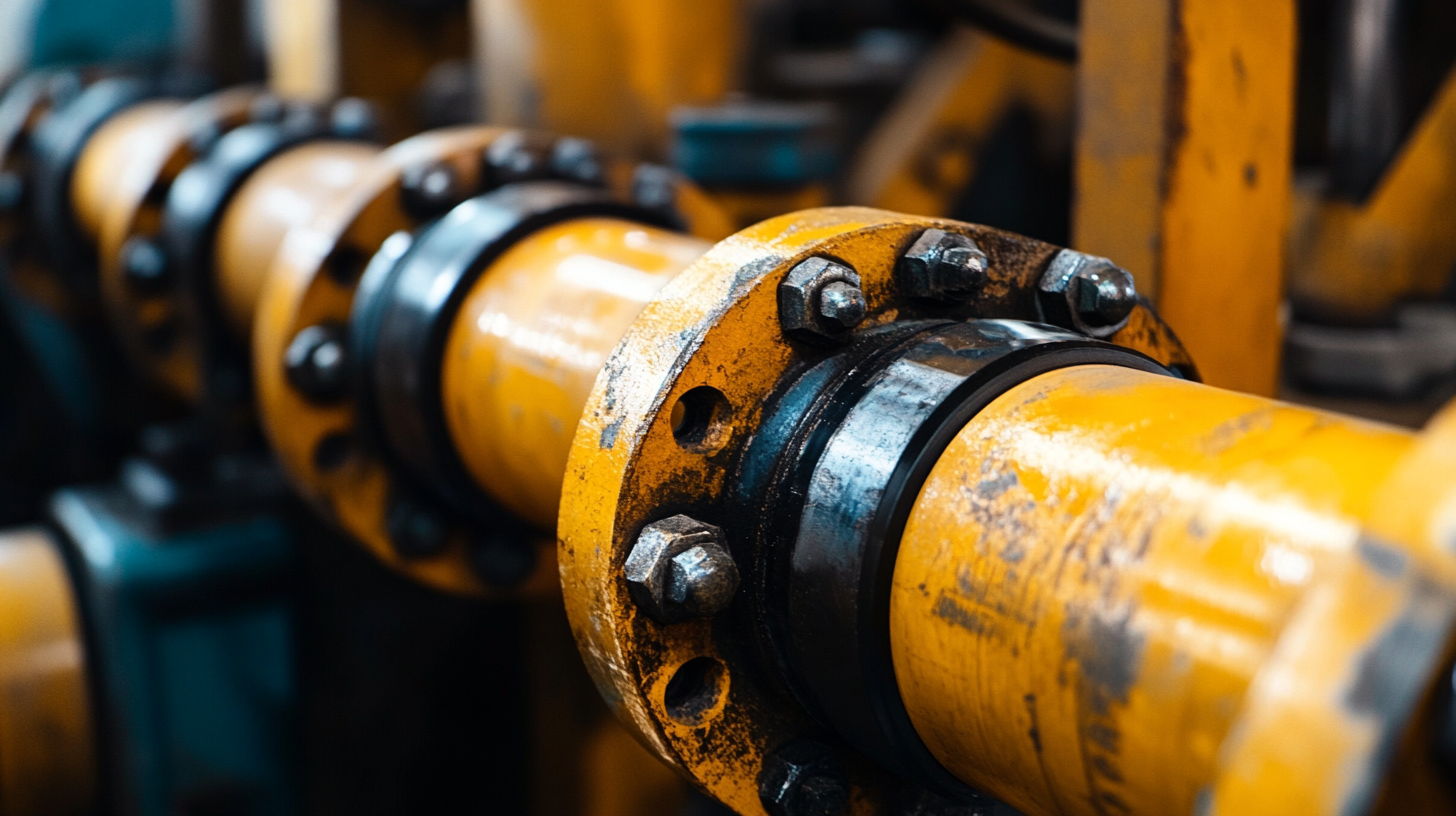International Fluid Power Inc.
International Fluid Power - Innovative Partners For Global Sourcing Of Fluid Power Products. Your Complete Hydraulic Source in SE Minnesota.
INTERNATIONAL FLUID POWER, INC.
Evaluating the Performance Metrics of Used Hydraulic Cylinders in Heavy Machinery Applications
In the realm of heavy machinery, the efficiency and reliability of hydraulic systems are paramount, as they play a critical role in the successful operation of various equipment. One of the key components in these systems are used hydraulic cylinders, which, despite being pre-owned, can offer substantial value when properly evaluated and maintained. This blog post delves into the performance metrics associated with used hydraulic cylinders, shedding light on their impact on the overall functionality of heavy machinery applications.
Understanding the performance of used hydraulic cylinders is essential for machinery operators and maintenance teams alike. With the rising costs of new equipment and spare parts, many industry professionals are turning to used components as a cost-effective solution. However, to ensure safety and operational efficiency, it is vital to assess the quality and effectiveness of these hydraulic cylinders through comprehensive evaluation methods. In the following sections, we will explore various performance metrics that can help operators make informed decisions, ultimately enhancing productivity and ensuring the longevity of their machinery.

Understanding Hydraulic Cylinder Basics and Their Role in Heavy Machinery
Hydraulic cylinders are essential components in heavy machinery, providing the power needed to perform various tasks, from lifting to pushing. Understanding the fundamentals of these hydraulic systems is crucial for optimizing performance and ensuring longevity. A hydraulic cylinder operates by using pressurized fluid, allowing it to generate significant force in a compact design. According to industry reports, approximately 70% of hydraulic failures can be attributed to fluid contamination, underscoring the importance of selecting appropriate hydraulic fluids and maintaining them effectively. The formulation and selection of hydraulic fluids can greatly affect the efficiency and functionality of hydraulic cylinders. Fluids must not only provide the necessary lubrication but also resist thermal breakdown and chemical degradation. Industry standards indicate that a well-maintained hydraulic system can achieve up to 90% operational efficiency, significantly reducing downtime and maintenance costs. Factors such as temperature, viscosity, and additives in hydraulic oils play a crucial role in performance. Regular monitoring and proper filtration systems are essential in extending the life of hydraulic components and ensuring their optimal operation in heavy-duty applications. Recent advancements in hydraulics, including the development of electromechanical systems, are also creating new opportunities for enhancing performance. These technologies provide precise control and greater energy efficiency compared to traditional hydraulic systems. The shift towards electrification in heavy machinery is not just a trend but a necessity driven by the need for reduced emissions and improved energy consumption. As industries evolve, understanding hydraulic cylinder basics and their integration with innovative technologies will be vital for companies aiming to remain competitive in a rapidly changing market.

Key Performance Metrics for Assessing Used Hydraulic Cylinders
In evaluating the performance metrics of used hydraulic cylinders, several key parameters come into play that are essential for assessing their functionality in heavy machinery applications. One of the foremost metrics is the cylinder's operating pressure capability, which determines its efficiency in handling the hydraulic load. Another significant factor is the cylinder's overall condition, including signs of wear, leakage, and operational history, which can drastically affect its performance and longevity. Regular monitoring can be enhanced through the integration of sensors into the hydraulic systems, providing real-time data on pressure fluctuations and thermal conditions. This technology opens avenues for improving maintenance schedules and operational efficiency.
Energy efficiency is also crucial when assessing used hydraulic cylinders, especially in contexts where energy consumption drastically impacts operational costs. For instance, research has shown that comparing motor-controlled and valve-controlled cylinders reveals notable differences in energy consumption patterns. This insight allows manufacturers and operators to choose configurations that not only optimize energy use but also enhance performance. Furthermore, the shift towards electromechanical systems offers a modern alternative, granting improved precision and reliability that could reshape the industry’s approach to hydraulic systems.
Ultimately, leveraging these key performance metrics—operating pressure, condition, energy efficiency, and advanced sensor integration—enables engineers and operators to make informed decisions about the viability and efficiency of used hydraulic cylinders in demanding applications. The advancements in technology signify a critical evolution in how performance assessment is conducted, paving the way for more sustainable and effective machinery operations.

Factors Influencing the Longevity of Hydraulic Cylinders in Industrial Use
Hydraulic cylinders are pivotal components in heavy machinery, directly influencing operational efficiency and lifetime performance. Understanding the factors that contribute to their longevity in industrial applications is crucial for minimizing downtime and maximizing productivity. Various studies have shown that environmental conditions, operational practices, and maintenance routines significantly affect the lifespan of hydraulic cylinders.
One of the primary factors influencing the longevity of hydraulic cylinders is the operating environment. Research from the International Hydraulic Institute indicates that cylinders exposed to extreme temperatures or corrosive elements can see a reduction in lifespan by as much as 30%. Contaminants such as dust and moisture can lead to premature wear, with studies revealing that nearly 70% of hydraulic system failures are caused by fluid contamination. Companies must implement stringent filtration and sealing measures to combat these issues.
Another significant factor is the quality of the hydraulic fluid used in the system. According to a report by the Fluid Power Journal, the correct viscosity and additive levels in hydraulic fluids can extend the lifespan of cylinders by up to 50%. Regular fluid analysis helps in identifying issues before they lead to serious damage, providing insights into effective maintenance strategies. Furthermore, operating practices, such as avoiding overloading and ensuring proper alignment in installations, are fundamental in reducing stress on hydraulic components, which contributes to longer service life and enhanced performance.
In conclusion, by focusing on environmental conditions, fluid quality, and operational practices, industries can effectively enhance the longevity of hydraulic cylinders. Investing in preventive maintenance and regular system evaluations can pave the way for improved reliability and performance in heavy machinery applications.

Common Issues and Troubleshooting Techniques for Used Hydraulic Cylinders
Hydraulic cylinders are critical components in heavy machinery applications, but with the rise in the use of used hydraulic cylinders, understanding their common issues and troubleshooting techniques has become essential for operators. Data from the International Hydraulic and Pneumatics Society indicates that nearly 30% of hydraulic system failures are attributed to malfunctioning hydraulic cylinders, predominantly due to wear and tear or contamination. The most common issues faced include internal leakage, which can lead to decreased efficiency and increased cycle times, and external leakage, which poses risks to the operational environment and safety.
Troubleshooting these issues requires a systematic approach. First, operators should perform a thorough inspection for visible signs of oil leakage or damage to the cylinder seals. Regular maintenance guidelines suggest inspecting and cleaning filters every 250 hours of operation to prevent contamination, a vital step underscored by case studies published in the Journal of Hydraulic Engineering. Additionally, using pressure gauges can help diagnose internal leverages; a sudden drop in pressure usually indicates an issue with the seals or a breach in the cylinder.
Another prevalent issue with used hydraulic cylinders is performance inconsistency, which can arise from previous usage history and operational conditions. Implementing a monitoring system that tracks performance metrics has been recognized as a best practice in maximizing the lifespan of these cylinders. Data analytics can highlight patterns that signal potential failures before they become critical, thus ensuring equipment reliability in demanding environments. The integration of such technology aligns with findings from the recent study on hydraulic systems in automotive and machinery applications, emphasizing the role of proactive maintenance in extending the operational efficiency of hydraulic systems.
Best Practices for Maintenance and Testing of Hydraulic Cylinders in Heavy Applications
Maintaining the performance of hydraulic cylinders in heavy machinery applications is critical for ensuring operational efficiency and safety. Regular maintenance practices, such as visual inspections, fluid checks, and prompt repairs, are essential in identifying potential issues before they escalate. Utilizing advanced testing methods, including simulation modules that can replicate common faults, allows technicians to assess the performance of hydraulic cylinders under various conditions. This proactive approach not only extends the lifespan of hydraulic components but also minimizes downtime during crucial operations.
When performing maintenance, it's imperative to follow industry best practices. This involves adhering to manufacturer guidelines for lubrication and replacement intervals, as well as employing diagnostic tools to pinpoint inefficiencies. Implementing a robust tracking system for maintenance history can assist organizations in understanding wear patterns and predicting future maintenance needs. Proper storage and handling of hydraulic cylinders also play a vital role in preventing damage and corrosion, further enhancing their reliability in demanding environments.
In addition, the introduction of recent innovations, such as hydraulic actuator running platforms equipped with fault simulation modules, revolutionizes the testing landscape. These platforms provide a controlled environment to assess cylinder performance, facilitating training and familiarization for operators and maintenance personnel. By simulating real-world scenarios, organizations can prepare their teams better, ensuring they are ready to tackle potential hydraulic system failures effectively. This comprehensive approach to maintenance and testing not only guarantees the reliability of hydraulic cylinders but also contributes to the overall productivity of heavy machinery applications.
You Can Find International Fluid Power Here:
Search For:
Footer #4 Widget
This is an example of a widget area that you can place text to describe a product or service. You can also use other WordPress widgets such as recent posts, recent comments, a tag cloud or more.
© 2025 International Fluid Power, Inc. All Right Reserved.
